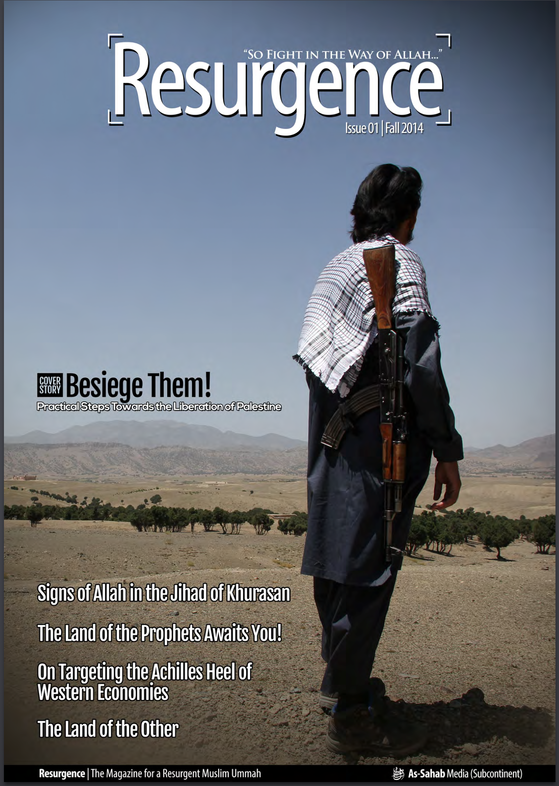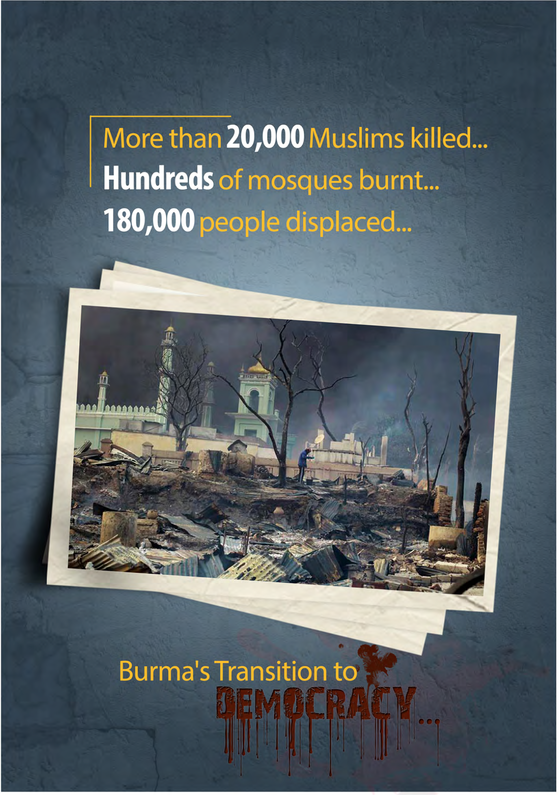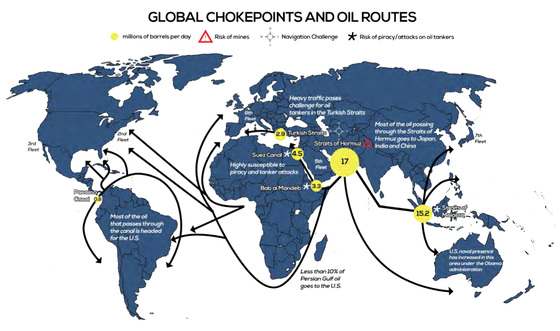On Oct. 19, al Qaeda finally released its new English-language, online magazine “Resurgence.” The organization announced the forthcoming publication in March, but the first edition was not released until seven months later.
The reasons for the delay in its release are not publicly known. At 117 pages, the magazine covers a variety of jihadist topics. But the content of the magazine is heavily focused on recent events, especially al Qaeda’s activities in the Indian Subcontinent.
It was produced by As Sahab, al Qaeda’s propaganda arm. However, “(Subcontinent)”, has been appended to As Sahab’s name, suggesting that the media wing has rebranded at least part of its operation to focus on the region.
Al Qaeda emir Ayman al Zawahiri and other senior jihadists announced the creation of al Qaeda in the Indian Subcontinent (AQIS), al Qaeda’s newest regional branch, in early September. Much of “Resurgence” is devoted to AQIS propaganda.
The cover story is an article by al Qaeda spokesman Adam Gadahn titled, “Besiege Them!” Gadahn writes of the “practical steps” that must be taken to “liberate” Palestine and restore the Islamic caliphate. Gadahn’s suggestions range from boycotting Western business interests to establishing an al Qaeda-style Islamic economy that is independent from the global financial system.
References to the possibility of resurrecting the caliphate are sprinkled throughout the rest of the magazine. A piece by the magazine’s editor, identified as Hassaan Yusuf, argues that “the restoration of the Caliphate and the liberation of Al Aqsa is an increasingly plausible ideal.”
While such standard jihadist themes are explored, “Resurgence” returns to the Indian Subcontinent as its point of reference.
“This wave of Jihad that originated in Afghanistan and has spread to Iraq, the Levant and North Africa is also the ultimate hope of the Muslims of the Subcontinent,” Yusuf writes. “It was Jihad that brought Islam to the Indian Subcontinent, and it will be Jihad again that will overturn the legacy of imperialism from Pakistan to Bangladesh and beyond.”
Al Qaeda in the Indian Subcontinent
Various pieces from other authors are dedicated to waging jihad in the Indian Subcontinent.
For instance, the magazine republishes a statement by AQIS spokesman Usama Mahmood, who has explained the rationale behind the group’s thwarted attack on the US Navy in September. Mahmood has previously released multiple statements concerning AQIS’ attempted hijackings of two Pakistani ships that were to be used in attacks on both American and Indian ships. [See LWJ report, Al Qaeda in the Indian Subcontinent claims attacks on Pakistani ships were more audacious than reported.]
An “in focus” section gives a “roundup” of news from throughout the Indian Subcontinent. The content portrays Muslims as being under siege in Pakistan, India, Bangladesh and Burma.
Although some have claimed that the establishment of AQIS is merely a reaction to the rise of the Islamic State in Iraq and Syria, al Qaeda has been attempting to woo Muslims across the Indian Subcontinent for years. Ayman al Zawahiri and other al Qaeda leaders have repeatedly tried to position the terrorist organization as the vanguard of Muslims throughout the region. They are attempting to incite the populace against their local governments, which are allegedly puppets of the West.
In September 2012, for example, Ustadh Ahmad Farooq issued a statement denouncing the alleged genocide being committed against Muslims in Burma and India. Farooq, who is the head of al Qaeda’s dawa and communications arm in Pakistan, has two articles in “Resurgence” trumpeting the jihad in South Asia. And, in January, Zawahiri issued a message focused on reported massacres in Bangladesh. Zawahiri also discussed Burma and called on Muslims to defend themselves against this “Crusader onslaught.” Other al Qaeda messages have been peppered with references to events throughout the region.
Thus, al Qaeda’s propaganda push in the Indian Subcontinent is not new. As can be seen in the banner to the right, “Resurgence” is yet another attempt by al Qaeda to exploit the violence in countries such as Burma.
An article by Aasim Umar, the emir of AQIS, is entitled, “The Future of Muslims in India.” Umar has directed messages to Indian Muslims on a number of occasions. In his latest piece, Umar argues that India is “a slave nation” that has committed “countless massacres of Muslims…for over sixty five years” under “Hindu rule.” Umar writes that Indian Muslims have “been fooled by the empty slogans” such as “‘Indian democracy’, ‘secular state’, ‘the land of Gandhi’, ‘peace’, and so on.”
“We have little doubt that, sooner or later, the Muslims of India too will come to the realization that their future is inextricably linked to the success of the Afghan Jihad,” Umar writes. “The Indian establishment, Brahman intellectuals, and political pundits fully appreciate this fact. They know that the victory of the Taliban in Afghanistan poses a significant threat to the future of Hindu political dominance in India.”
No explicit denunciation of the Islamic State
“Resurgence” republishes a statement by Mullah Omar, the Taliban’s leader, from earlier this year. Omar says that all American and Western forces must be withdrawn from Afghanistan, and he calls on the entire Islamic world to denounce Israel for its supposedly “savage aggression” against “oppressed Palestinians.”
In “Resurgence,” as in other al Qaeda messages and statements, Omar is called “Amir ul Mominin,” or the Commander of the Faithful, a title that is usually reserved for the leader of an Islamic caliphate. Abu Bakr al Baghdadi, the head of the Islamic State, has attempted to usurp this title for himself.
In its propaganda, al Qaeda has taken a subtle approach to responding to the Islamic State’s claims. The group has pushed its allegiance to Omar, and his presumed role as the rightful caliph.
“Resurgence” does not include any specific denunciations of the Islamic State. But it does reproduce a quote from Zawahiri explaining how a proper jihadist caliphate will be built. After arguing that jihadists are an inseparable part of the ummah, or community of Muslims, Zawahiri writes, “The Islamic State will be established – by the help and will of Allah — at the hands of the free, sincere and honorable Mujahideen. It will be established with their sacrifices, generosity, consent and collective choice.”
This could be read as a thinly-veiled critique of the Islamic State, as one of the pro-al Qaeda jihadists’ chief criticisms of Baghdadi is that he has tried to impose his caliphate on all other Muslims, eschewing the type of consensus that al Qaeda believes is necessary to form first. In the context of their rivalry with the Islamic State, senior al Qaeda leaders have reproduced similar quotes from Zawahiri throughout the year.
Another piece in “Resurgence,” written by Zawahiri’s son-in-law, Muhammad bin Mahmoud Rabie al Bahtiyti (a.k.a. Abu Dujana al Basha), urges Muslims to support the mujahideen in Syria, but also says nothing about the Islamic State. Al Bahtiyti released an audio message warning against the Islamic State in late September. Even though al Bahtiyti clearly sought to undermine Baghdadi’s group, he did not explicitly name the Islamic State in that message either.
“On Targeting the Achilles Heel of Western Economies”
One of the lengthier pieces in “Resurgence” is a detailed analysis by a jihadist known as Hamza Khalid, who writes that there is an “energy umbilical cord which [sic] sustains western economies” and “stretches across hundreds of miles of pipelines and sea lanes.” This “represents the Achilles heel not just of the energy market, but also of western economies dependent on oil from the Muslim world.”
Khalid argues that a strategy of “sustained disruption in this supply system would not only increase insurance costs for international shipping, but also affect the price of oil globally, making the theft of our petroleum resources an expensive venture for the West.” Khalid then delves into an in-depth assessment of various “choke points,” explaining the relative virtues of striking them.
“After this brief overview of the world’s most critical sea lanes,” Khalid writes, “one cannot fail to appreciate the strategic opportunity that geography presents for the Mujahideen.” But al Qaeda’s enemies know this, Khalid warns. The “US has established a network of bases that spans the Muslim world” to protect these interests.
Khalid then discusses America’s military bases, and concludes that the jihadists face “challenges” but also have “opportunities.” He concludes that the current environment “requires a multi-pronged strategy that focuses not only on attacking [the] American military presence in the Muslim world, but also targeting the super-extended energy supply line that fuels their economies and helps to sustain their military strength.”
Khalid believes that the time is coming for a sustained campaign of “economic warfare,” in which jihadists from around the world target key infrastructure points. Striking the US Navy is not a fantasy, Khalid claims.
“The recent attempt by a group of Mujahid officers of the Pakistan Navy to carry out a complex and coordinated attack on the American Navy in the Indian Ocean using warships of the Pakistan Navy aptly demonstrates this point,” Khalid writes.
The attempted attacks Khalid praises are the same ones carried out by AQIS in early September. The new al Qaeda branch’s terror plots tell us much about the organization’s approach to waging jihad. And so does al Qaeda’s “Resurgence” magazine.











4 Comments
i call these morons daydreaming scum. They need to be eliminated nevertheless. India is a major obstacle to their plans. I doubt that any sane muslim will buy into their propaganda.
This so called Resurgence magazine is full of hot air, with the likely chances of their terrorism in non-muslim Asian countries as pretty slim. Even the Pakistani ISI are struggling to spread their islamic terror in India, while battling against their own Frankenstein monsters of the Taliban in their own country. As for Burma, there has not been any islamic terrorist attacks in that country since the Rohingya’s (i.e. Bengali speaking Muslims descended from Bangladesh) been mentioned in the media in recent years. Even if Al Qaeda did try, it would fail miserably, because of dense infested forests in Burma filled with mosquitoes that would eat them alive theoretically and also the strict security patrol between the land borders of Bangladesh and Burma.
Yikes! This is a whole lot of nothing going on that could spoil our smooth “retrograde” from AfPak. Someone should hit the Stop button!
As the world watches another jihadi horror movie (the evil headchoppers of the Islamic State) entirely, barely pausing for popcorn, Old Z sticks to his knitting (trying to start WWIII, thinking strategically and expanding geographically through a combination of alliances and marriages of convenience).
What an olive branch! Rapprochement to come only after AQ lands a big blow of its own to make up its insufficiencies vis-à-vis the IS. It will be aircraft or ship or poison gas or bio. They can’t afford another small one. Despite the hype, Boston damaged the brand.
The Karachi attack could have been a 9/11 reprise in terms of a US response in South Asia (where’s the press on that??); Mumbai will certainly be reprised. AQIS is entrenching for the long fight.
Good for India to fight hard and early! The terrorists are asleep. Kill or capture them before they wake up. A stitch in time saves nine, in AQIS’s case.
“Safe hide-out: Al-Qaeda turning Hyderabad into its stronghold in South”
http://news.oneindia.in/india/safe-hide-out-al-qaeda-turning-hyderabad-into-its-stronghol-1545551.html
This is “good news” in a way . . . Jihad is not just a threat against Western Civilization and Israel, it is too a threat to all civilizations. India’s 660 Hindus and Sikhs will eventually be our allies in this global fight against Radical Islam. As Franklin said, we either all hang together or all hang separately.
There have been a lot of rhetoric by the extreme right attacking multiculturalism and linking it to Radical Islam, but the reality is people of all ethnic and religious backgrounds world wide are under the same threat of this Radical Islam monster. What could be a better unifying force for world peace and bringing everyone together to fight this evil?